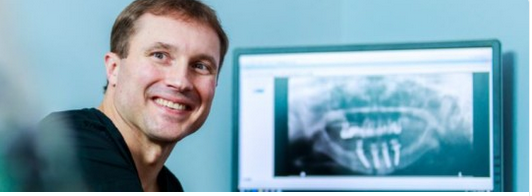Introduction:
Maxillofacial surgery takes the lead in managing a wide array of conditions related to the face, mouth, and jaws. Among its crucial roles, maxillofacial surgery plays an indispensable part in diagnosing and treating cysts and tumors located in the jaw or facial region. Dr Mark Austin North Carolina provides insights into how maxillofacial surgery is instrumental in addressing these conditions effectively.
Understanding Cysts and Tumors in the Jaw or Facial Region:
Cysts and tumors within the jaw or facial area may manifest as abnormal growths that can vary in their potential health risks. Cysts are typically fluid-filled sacs that can develop in various bodily tissues, while tumors can be classified as benign (non-cancerous) or malignant (cancerous). These growths may present with a range of symptoms, from swelling and pain to alterations in the functioning of oral and facial structures.
Accurate diagnosis is critical in determining the nature of these conditions, their severity, and their potential impact on surrounding structures. This is where maxillofacial surgery emerges as a crucial Dr Mark Austin component in the treatment process.
Cyst Enucleation or Marsupialization:
Treatment for cysts often involves enucleation, a procedure in which the entire cyst, including its lining, is surgically removed to prevent recurrence. In cases of larger cysts, maxillofacial surgeons may employ marsupialization, a technique that reduces the cyst’s size before complete removal.
Tumor Excision:
Benign tumors typically require surgical excision, a process facilitated by maxillofacial surgery. Depending on the tumor’s size and location, this procedure can range from straightforward removal to more complex interventions aimed at preserving essential facial functions.
In instances involving malignant tumors, maxillofacial surgeons often collaborate with interdisciplinary teams to provide comprehensive oncologic treatment. This can encompass surgical excision, chemotherapy, or radiation therapy, depending on the tumor’s nature and stage.
Post-Surgical Reconstruction:
For cases involving larger tumors or cysts, maxillofacial surgical removal may necessitate the substantial removal of surrounding tissues or bones. In such scenarios, maxillofacial surgeons develop tailored reconstructive plans. These plans may include techniques such as bone grafts or prostheses, ensuring that functionality and appearance are optimally restored following surgery.
Conclusion:
Maxillofacial surgery plays a pivotal role in diagnosing, treating, and reconstructing the jaw and facial region affected by cysts and tumors. The expertise of maxillofacial surgeons is instrumental in Dr Mark Austin ensuring accurate diagnosis, precise treatment, and effective post-surgical reconstruction, ultimately enhancing the well-being and quality of life of patients facing these challenging conditions.



